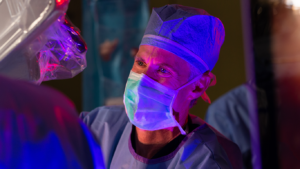A Century of Care
From cottages to world-class facilities, Arizona’s health care industry has flourished
 In the nearly 100 years since Arizona became a state, the health care sector has become a powerful economic force.
In the nearly 100 years since Arizona became a state, the health care sector has become a powerful economic force.
According to a study by Arizona State University’s L. William Seidman Research Institute, Arizona’s hospital community alone employs more than 80,000 people and contributes $11.5 billion to the gross state product. Indirectly, hospitals create about 120,000 additional jobs, more than the combined populations of Coconino, Graham and Santa Cruz counties.
Sisters of Mercy
It all started some 17 years before statehood in January 1895, when the Sisters of Mercy had collected enough money to rent a six-bedroom cottage at Fourth and Polk streets in Downtown Phoenix. Each room was equipped with two beds for TB patients, and thus was born St. Joseph’s Sanitarium, predecessor of St. Joseph’s Hospital and Medical Center and the first hospital in Phoenix. 
In the mid-1940s, the nuns purchased 10 acres at Third Avenue and Thomas Road, which was part of an old dairy farm. Today, St. Joseph’s is a 670-bed, not-for-profit hospital that is one of the cornerstones of the state’s health care industry.
A second giant in health care, Good Samaritan Hospital of Phoenix, launched its first facility in an apartment building at Third Street near Van Buren in 1911. Initially incorporated as the Arizona Deaconess Hospital and Home, it opened with 15 beds.
One-hundred years later, Banner Good Samaritan Medical Center in Downtown Phoenix is the flagship of Banner Health, with more than 662 licensed patient care beds. Banner Good Samaritan employs more than 4,200 health care professionals and support staff. Nearly 1,700 physicians representing more than 50 specialties work with Banner Good Samaritan staff to care for more than 43,000 inpatients a year.
Another early entry in the health care scene was the State Asylum for the Insane, which was rebuilt after a fire in 1911. In 1924, the asylum was informally renamed Arizona State Hospital.
Established in 1943 as a community hospital, Tucson Medical Center is among the 300 largest hospitals in the country. It is licensed for 650 adult and skilled nursing beds, and serves more than 30,000 inpatients and 122,000 outpatients a year.
 In 1971, University Medical Center — a private, nonprofit hospital located at the Arizona Health Sciences Center adjacent to the University of Arizona in Tucson — was established. UMC is Arizona’s only academic medical center, and earlier this year it became an international focal point for neurosurgery and trauma care after a gunman shot and wounded U.S. Rep. Gabrielle Giffords (D-Ariz.) and killed six people.
In 1971, University Medical Center — a private, nonprofit hospital located at the Arizona Health Sciences Center adjacent to the University of Arizona in Tucson — was established. UMC is Arizona’s only academic medical center, and earlier this year it became an international focal point for neurosurgery and trauma care after a gunman shot and wounded U.S. Rep. Gabrielle Giffords (D-Ariz.) and killed six people.
In Northern Arizona, the Flagstaff Medical Center, a not-for-profit hospital, was founded in 1936. A part of the Northern Arizona Healthcare family, it has some 270 beds and its medical staff includes about 200 physicians. Among its specialties are cancer, heart and sports medicine.
Health care continues to be a concern on Indian reservations throughout Arizona, particularly in some of the remote regions. A relatively new program, the American Indian Research Center for Health is designed to improve the health status of Native Americans and increase the number of Native American scientists and health professionals engaged in research. Classes for the student-training component of the program are held at the University of Arizona.
Read more…




